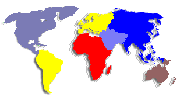|

A GLOBAL REPORT
REDUCING DISASTER RISK
A CHALLENGE FOR DEVELOPMENT
Natural disasters exert an enormous toll on development. In doing so, they pose a significant threat to prospects for achieving the Millennium Development Goals in particular, the
overarching target of halving extreme poverty by 2015. Annual economic losses associated with such disasters averaged US$ 75.5 billion in the 1960s, US$ 138.4 billion in the 1970s, US$ 213.9
billion in the 1980s and US$ 659.9 billion in the 1990s. The majority of these losses are concentrated in the developed world and fail to adequately capture the impact of the disaster on the
poor who often bear the greatest cost in terms of lives and livelihoods, and rebuilding their shattered communities and infrastructure. Today, 85 percent of the people exposed to
earthquakes, tropical cyclones, floods and droughts live in countries having either medium or low human development.
This Report is premised on the belief that in many countries the process of development itself has a huge impact - both positive and negative - on disaster risk. It shows how countries that face
similar patterns of natural hazards - from floods to droughts - often experience widely differing impacts when disasters occur. The impact depends in large part on the kind of development
choices they have made previously. As countries become more prosperous, for example, they are often better able to afford the investments needed to build houses more likely to withstand
earthquakes. At the same time, the rush for growth can trigger haphazard urban development that increases risks of large-scale fatalities during such a disaster. The same is true in many other
areas.While humanitarian action to mitigate the impact of disasters will always be vitally important, the global community is facing a critical challenge: How to better anticipate - and then
manage and reduce - disaster risk by integrating the potential threat into its planning and policies.
To help frame such efforts, this Report introduces a pioneering Disaster Risk Index (DRI) that measures the relative vulnerability
of countries to three key natural hazards - earthquake, tropical cyclone and flood - identifies development factors that contribute to risk, and shows in quantitative terms, just how the effects of
disasters can be either reduced or exacerbated by policy choices.Our hope is that the index will both help generate renewed interest in this critical development issue and help bring together
stakeholders around more careful and coherent planning to mitigate the impact of future disasters. more
Copyright © 2004
United Nations Development Programme
Bureau for Crisis Prevention and Recovery
One United Nations Plaza
New York, NY 10017, USA
www.undp.org/bcpr

|



